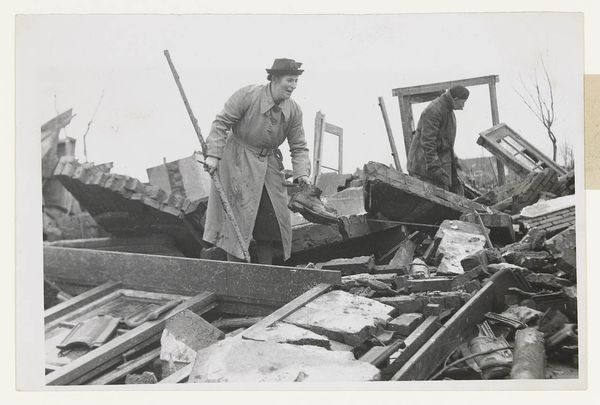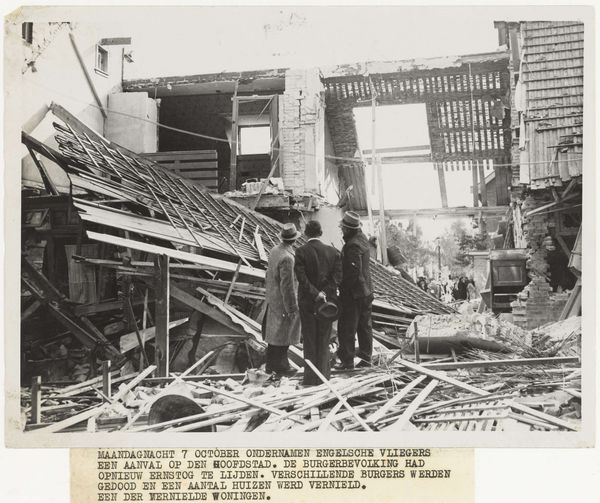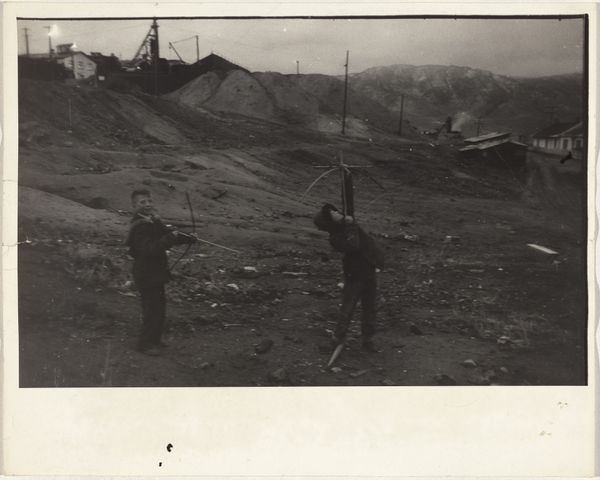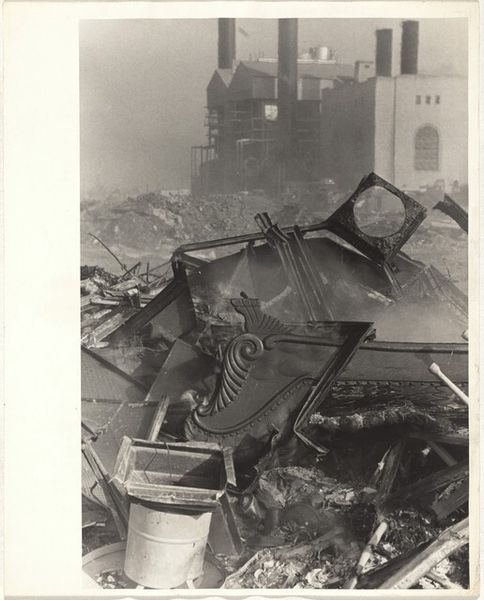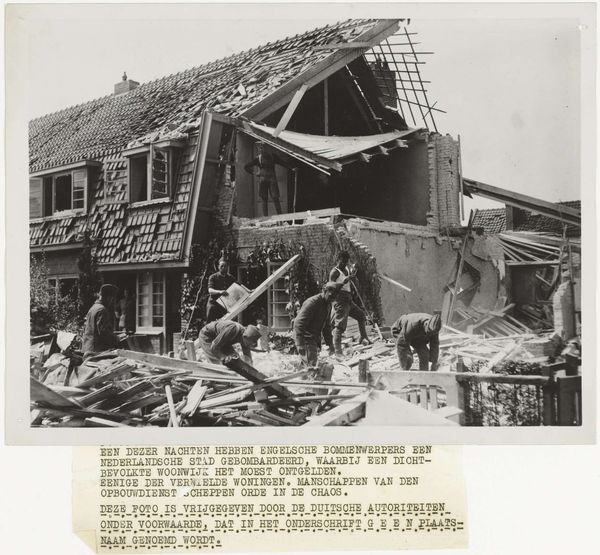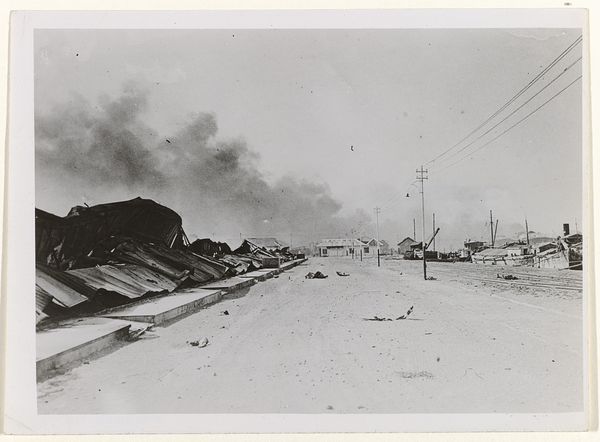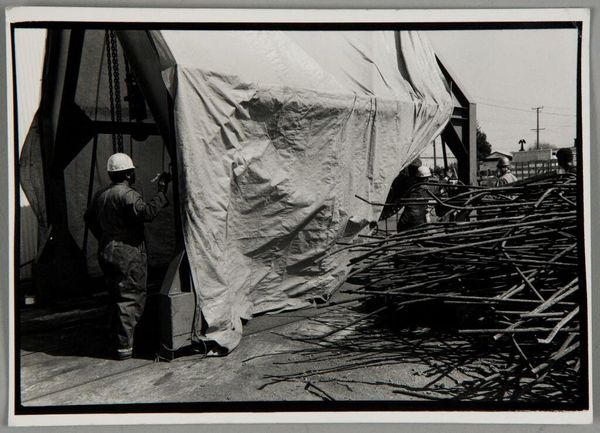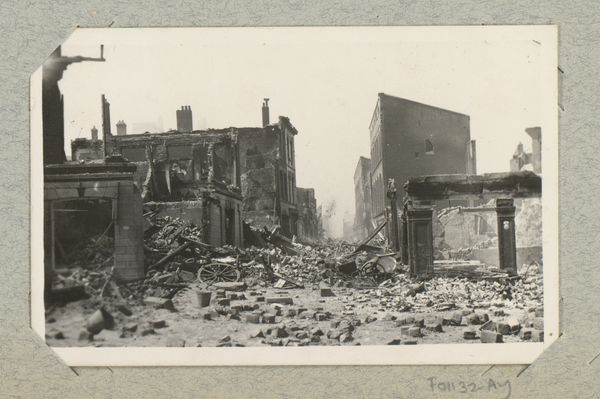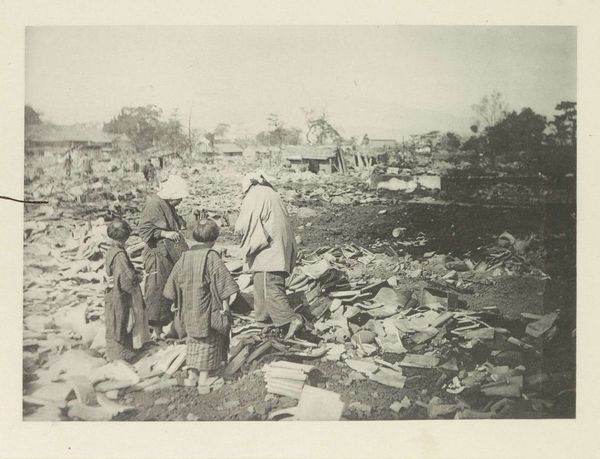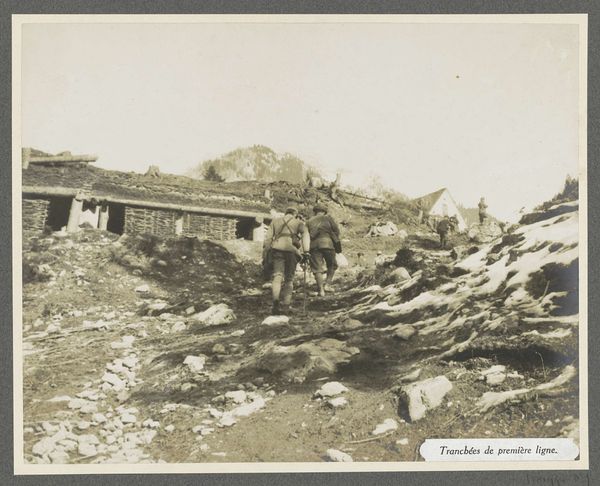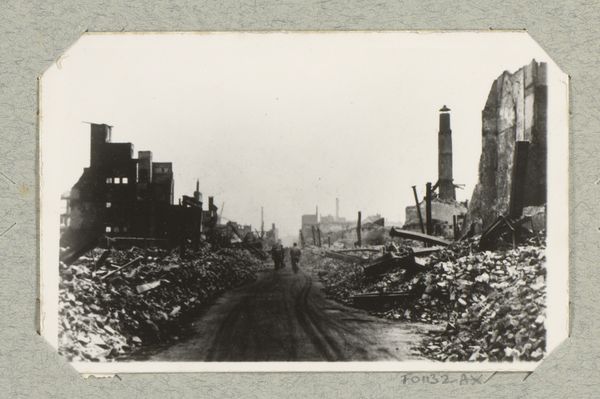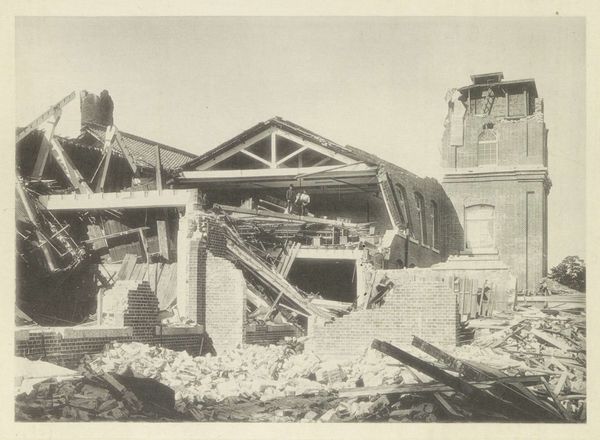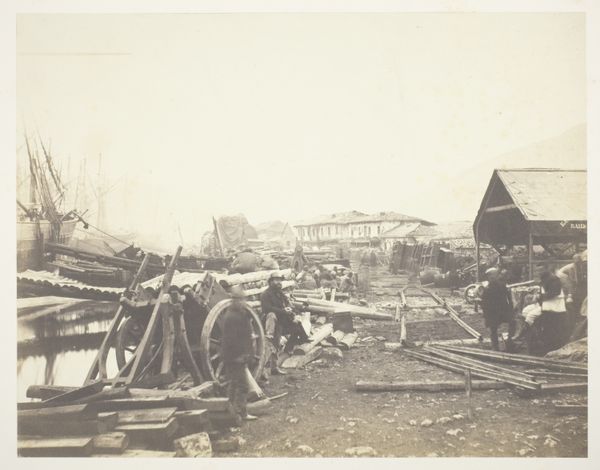
Joris Ivens, John Fernhout and Robert Capa at Work in the Bombed City of Hankow 1938
0:00
0:00
print, photography, gelatin-silver-print
#
print photography
# print
#
archive photography
#
photography
#
historical photography
#
photojournalism
#
gelatin-silver-print
#
modernism
Dimensions: height 250 mm, width 200 mm
Copyright: Rijks Museum: Open Domain
Editor: So, this is "Joris Ivens, John Fernhout and Robert Capa at Work in the Bombed City of Hankow," a gelatin-silver print from 1938. The destruction is palpable, but there's also something oddly calm about it... the men are just, well, working. What strikes you when you look at this image? Curator: You know, it's funny, "calm" isn't the word I'd immediately jump to, but I see what you mean. There's a focused intensity in those figures, almost as if they’re breathing in the devastation to exhale something new. It's a record, sure, but for whom, and for what? It makes you wonder about the strange dance between observation and exploitation, doesn't it? Are they witnesses, or are they shaping the narrative? Editor: Shaping the narrative, that's interesting. It feels like a very meta image, photographers photographing photographers in a space that's already charged with meaning. Did people question this type of war reportage back then? Curator: Absolutely. This image exists in a space where propaganda, art, and historical document blur. Consider, for a moment, what *doesn't* make it into the frame. Whose stories aren't being told? It's not a simple matter of right and wrong; it's a negotiation, a messy collaboration between reality and representation. Capa and his contemporaries knew this. They were both artists and reporters, revolutionaries of their time. Editor: So it's almost like we're seeing them wrestling with their own roles in that very moment. Makes you wonder about all the unseen forces at play in every photograph we see. Curator: Precisely. We bring our own baggage to it. They brought theirs. It's less about a clear "truth" and more about a kaleidoscope of perspectives bouncing off each other. The power of this work lives in its unresolved tension. Editor: I think I'll carry that kaleidoscope image with me. Definitely changes how I'll look at photos moving forward. Curator: Good. And that's the beauty, isn’t it? That even decades later, these images can still whisper secrets and shift the ground beneath our feet.
Comments
No comments
Be the first to comment and join the conversation on the ultimate creative platform.
